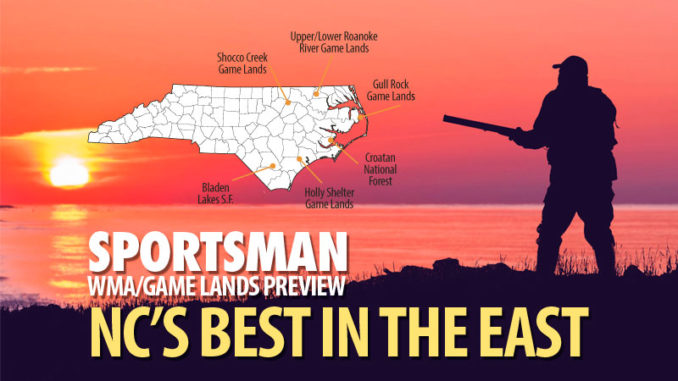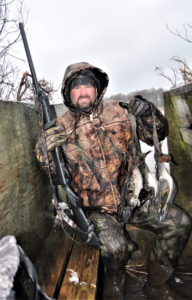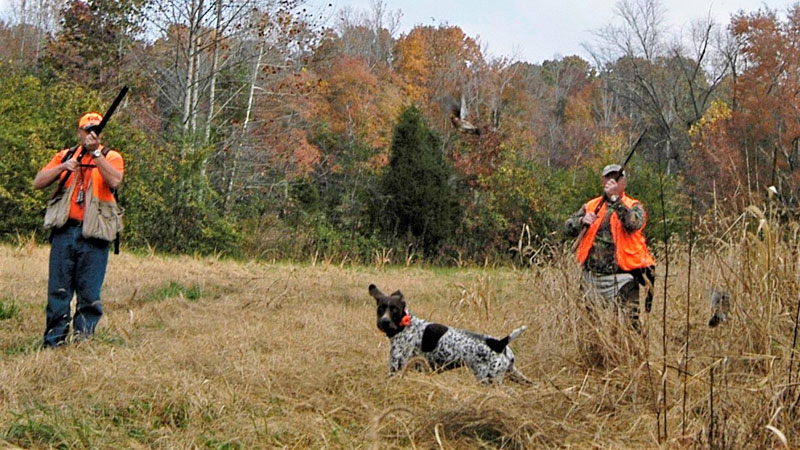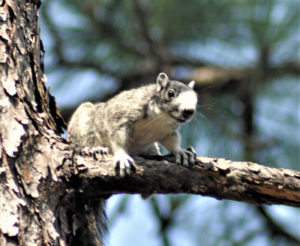
Coastal Plain has fantastic destinations
The N.C. Wildlife Resources Commission manages the eastern third of the state in two regions, Northeast and Southeast. Here are three places to go for multi-species hunting opportunities.
Upper/Lower Roanoke River
The Upper Roanoke River Wetlands Game Lands, Lower Roanoke River Wetlands Game Lands and National Wildlife Refuge cover almost 42,000 acres and are managed as one system.
The Upper Roanoke (10,253 acres) is in Bertie, Halifax and Northampton counties. The Lower Roanoke (31,704 acres) is in Bertie and Martin counties. Both require hunting permits. Hunters should try on-line applications or “point-of-sale” (wildlife-cooperator agents) for permits. Some permits allow no-waiting access, while others enter sportsmen into lottery drawings.
“Deer are plentiful at the Upper Roanoke,” said biologist Chris Baranski of the Commission. “No dog hunting is allowed. However, the Boone tract has underutilized (deer) blinds for youths and youth-adult hunts.”

No bear hunting is allowed on either game land. Squirrels are plentiful in the bottomland hardwood forests, quail are scarce, but the lowlands hold woodcocks. The Garibaldi Tract in Northampton County has a popular, 200-acre dove field.
On the Lower Roanoke, the Devereaux Swamp — part of the Conoho Farms Tract — is a good spot for deer, biologist David Turner said. Waterfowl hunters may apply for Conoho Farms draw permits for its lone impoundment.
“Duck (success) is hit or miss, depending on the weather,” Turner said. “You might see wood ducks, teal, mallards or a few ringnecks.”
Conoho Farms’ big draw is 40 acres of managed dove fields, which offer rabbit-hunting habitat around fields.
Gull Rock Game Lands
A 28,600-acre, six-days-a-week game land in Hyde and Tyrrell counties, Gull Rock is partitioned into three sections, with the largest — the lower Outfalls Canal Tract south of Mattamuskeet Lake — sandwiched between Lake Mattamuskeet and Swan Quarter National Wildlife refuges. Outfalls Canal is a bear sanctuary area (no hunting allowed).
“But bear hunting is allowed at some of the Long Shoal Tract off NC 94,” Turner said, “and dogs can be used.”
For waterfowl, Gull Rock has a 250 acres of managed waterfowl impoundments, with no permits required.
“Besides ducks, it’s also got potential if you draw a (tundra) swan permit,” Turner said.
Gull Rock’s main habitat is thick pocosin and swamps, which limits deer and small-game hunting.
Shocco Creek Game Lands
This 8,109-acre game land has nine sections scattered across Franklin, Halifax, Nash and Warren counties between US 401 and NC 43.
“It’s open six days per week and is a pretty popular game land, for deer,” Baranski said.
Hunting permits aren’t required, and the Commission allows still- and deer-dog hunting on Shocco Creek.
Waterfowl hunters mainly see wood ducks at swamps and bottom lands.
An active forestry plan — timber harvesting, thinning and controlled burns — has created good quail habitat.
“Hunters won’t find a dozen coveys a day, but there are birds,” he said.
Squirrel and rabbits also live around wildlife openings and fields.
“(Habitat management) has allowed forbs and (cutover) areas to grow (for rabbit and quail),” Baranski said. “The squirrels are on steep hardwood ridges the former owner couldn’t log.”
Croatan National Forest
With its 162, 217 acres spread across Carteret, Craven and Jones counties, the Croatan National Forest is North Carollina’s third-largest game land.
The only required permits are for the Catfish Lake waterfowl impoundment’s disabled-hunters blinds, the first two days of dove season at planted fields and bear- and deer-dog hunting.

“(It’s) a popular place for deer and bear hunting,” said biologist Richie Clark of the Commission
Croatan has thousands of posted bear-sanctuary acres, but still-hunters and deer-dog hunters may hunt other sections.
“Habitat varies from mixed hardwoods to pocosin and tupelo swamps,” he said. “Creeks, swamps and drainage forests around Catfish Lake draw waterfowl. Hunters see mostly mallards and gadwalls at creeks. “Other puddle ducks and ringnecks show up at Catfish Lake.”
Six managed dove fields are between Maysville and Cape Carteret and at Brice’s Creek near New Bern.
“Croatan has pockets of quail, mainly at fire-controlled areas and transition areas between ridges and swamps,” Clark said.
Mixed hardwoods and pine forests contain gray squirrels and some fox squirrels.
“Right after deer season, we have tons of people hunting rabbits at dove fields and wildlife openings,” he said. “There’s a huge complex of old, abandoned agricultural fields with cottontails and a few swamp rabbits.”
Holly Shelter Game Lands
This 63,556-acre game land north of Wilmington contains a variety of game animals, including black bears and deer.
The Bear Garden Tract between NC 53 and Bear Garden Road in the northern section is known for its permitted bear hunting with dogs. Eight 3-day hunts are held in November and December, and in 2017, 33 bears were taken.
Holly Shelter is a six-days-a-week game land, but dog hunting for bear or deer only is allowed Mondays-Wednesdays-Saturdays, Thanksgiving, Christmas and New Year’s Day, with still-hunting on Tuesdays and Thursdays.
“Dog hunters like Holly Shelter because it’s crisscrossed by (access) roads,” Clark said.
Holly Shelter has a 206-acre, managed waterfowl impoundment, Lodge Road, and a smaller, greentree impoundment off Shaw Highway. Both were dry during the first six months of 2019 because Hurricane Florence destroyed dikes.
“We’ve been working with a contractor to get that fixed,” he said.

Duck hunters run into mostly puddle ducks, including mallards and wood ducks. Waterfowling is allowed only on Tuesdays and Saturdays, plus Christmas, New Year’s Day and MLK Jr. holidays.
Holly Shelter features 25 dove fields totaling 60 acres. Some quail live around those fields and at re-growing burns and transition areas between ridges and swamps.
“Field borders have rabbits,” Clark said. “The game land also has gray and fox squirrels.”
Bladen Lakes State Forest
The N.C. Forest Service owns this game land that’s managed by the Commission and divided into two tracts.
“Deer and bear offer hunting opportunities,” said biologist Chesley Ward of the Commission. “It’s a three-day (Monday-Wednesday-Saturday) game land. Dog and still-hunting is allowed (at the main tract).”
“Deer densities aren’t extremely high, but hunters are pretty successful,” Ward said. “The Singletary Tract doesn’t allow dog-hunting, so it’s popular with still hunters. We plant fall oats, wheat and rye at Singletary for bears and deer and chufa for turkeys. Tons of agricultural fields border the (main) game land.”
Duck hunters may try beaver-pond wetland systems, but they’re scattered and small. Dove hunters can access two 7-acre fields and a 2-acre field in the middle of a pine forest.
Some quail and more rabbits are at dove fields and regenerating clear cuts.
“Bladen Lakes is a stronghold for fox squirrels because of scrub oak and longleaf pines,” Ward said. “It’s also has gray squirrels.”



